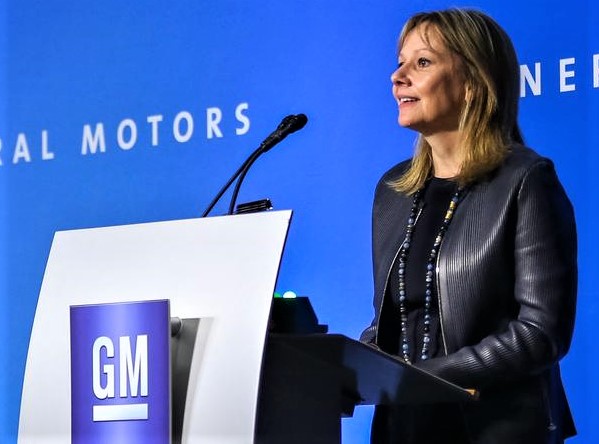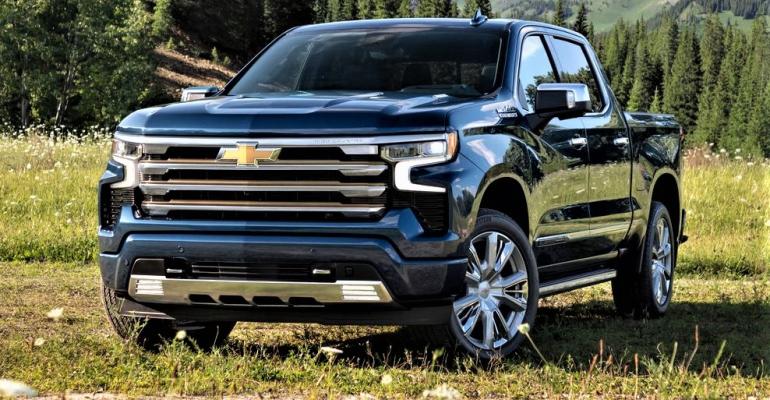General Motors’ executive team sees no need to divide the company into separate units for battery-electric vehicles and conventional vehicles with internal-combustion engines.
Speaking at a conference organized by Wolfe Research, Mary Barra, GM’s chair and CEO, says dividing the company would lead to a duplication of effort. Both BEVs and ICE vehicles share critical components including software, interiors and chassis, so it wouldn’t make sense to divide them, she says.
Rival Ford a year ago announced the creation of separate units for its electrified, ICE and commercial vehicles. The other Detroit Three automaker, Stellantis, has said it doesn’t intend to split its BEV and ICE operations.
 Even without structural change, says Barra (pictured, left), GM has undergone a major overhaul since the middle of the last decade, leaving it in a much stronger position. “We believe this is the year we pull away from other traditional automakers,” she says.
Even without structural change, says Barra (pictured, left), GM has undergone a major overhaul since the middle of the last decade, leaving it in a much stronger position. “We believe this is the year we pull away from other traditional automakers,” she says.
Going back to 2016, GM took to heart surveys showing it was lagging in quality and has systemically worked to address engineering issues that undermined the quality of its vehicles. Surveys now show GM’s quality is improving while competitors have lost ground, Barra claims.
Ford CEO Jim Farley acknowledges the automaker still faces major quality issues, which are driving up warranty costs.
GM is working more closely with suppliers, which helps improve quality from the start, Barra says, adding that surveys of supplier attitudes show they now prefer working with GM – something which was not the case in the past.
Additionally, GM has been working since 2018 on its Ultium platform for BEVs. While other automakers are just beginning work on dedicated EV platforms, Barra notes GM expects to have seven different vehicles using the Ultium platform on sale by the end of this year.
In support of its BEV initiatives, GM is engaged in both battery development and manufacturing. It now operates a battery plant in Ohio, and with its partner LG Energy Solution expects to bring two more online in the next 12 to 15 months, Barra says.
The new battery plants operate under a GM-LG joint venture, but GM also has a separate venture working on the development of new battery technology with LG.
“We never stopped working on batteries and fuel cells since EV1,” says Barra, referring to GM’s first experimental electric vehicle (pictured, below) produced and leased from 1996-1999.

Rod Lache, Wolfe’s senior automotive analyst, notes GM posted impressive results during 2022 despite supply chain disruptions and inflation even as it pressed ahead with a half-dozen major initiatives. “Consistency of financial performance has been one of the hallmarks of the company,” he says.
Chief Financial Officer Paul Jacobson says GM remains optimistic about the outlook for 2023. The automaker currently sees no signs of a price war developing in the industry.
“We’re not seeing anything right now, but we need to be ready for that,” Jacobson says. “We’re just not seeing anything that suggests a major de-valuation. We’re producing really high-quality vehicles that people are clamoring for.”
But GM also expects to reduce its costs by $2 billion this year even as maintains production, he says.





